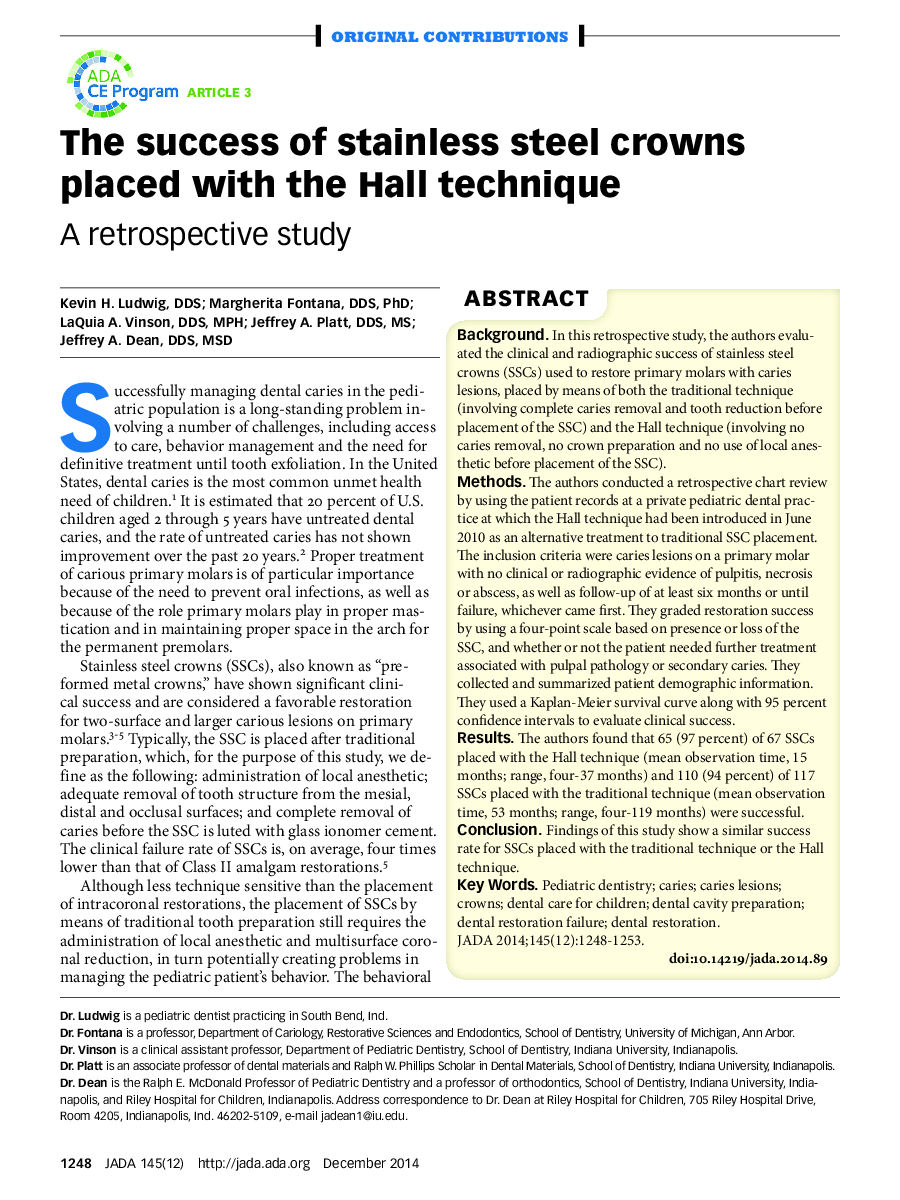| Article ID | Journal | Published Year | Pages | File Type |
|---|---|---|---|---|
| 3136929 | The Journal of the American Dental Association | 2014 | 6 Pages |
ABSTRACTBackgroundIn this retrospective study, the authors evaluated the clinical and radiographic success of stainless steel crowns (SSCs) used to restore primary molars with caries lesions, placed by means of both the traditional technique (involving complete caries removal and tooth reduction before placement of the SSC) and the Hall technique (involving no caries removal, no crown preparation and no use of local anesthetic before placement of the SSC).MethodsThe authors conducted a retrospective chart review by using the patient records at a private pediatric dental practice at which the Hall technique had been introduced in June 2010 as an alternative treatment to traditional SSC placement. The inclusion criteria were caries lesions on a primary molar with no clinical or radiographic evidence of pulpitis, necrosis or abscess, as well as follow-up of at least six months or until failure, whichever came first. They graded restoration success by using a four-point scale based on presence or loss of the SSC, and whether or not the patient needed further treatment associated with pulpal pathology or secondary caries. They collected and summarized patient demographic information. They used a Kaplan-Meier survival curve along with 95 percent confidence intervals to evaluate clinical success.ResultsThe authors found that 65 (97 percent) of 67 SSCs placed with the Hall technique (mean observation time, 15 months; range, four-37 months) and 110 (94 percent) of 117 SSCs placed with the traditional technique (mean observation time, 53 months; range, four-119 months) were successful.ConclusionFindings of this study show a similar success rate for SSCs placed with the traditional technique or the Hall technique.
